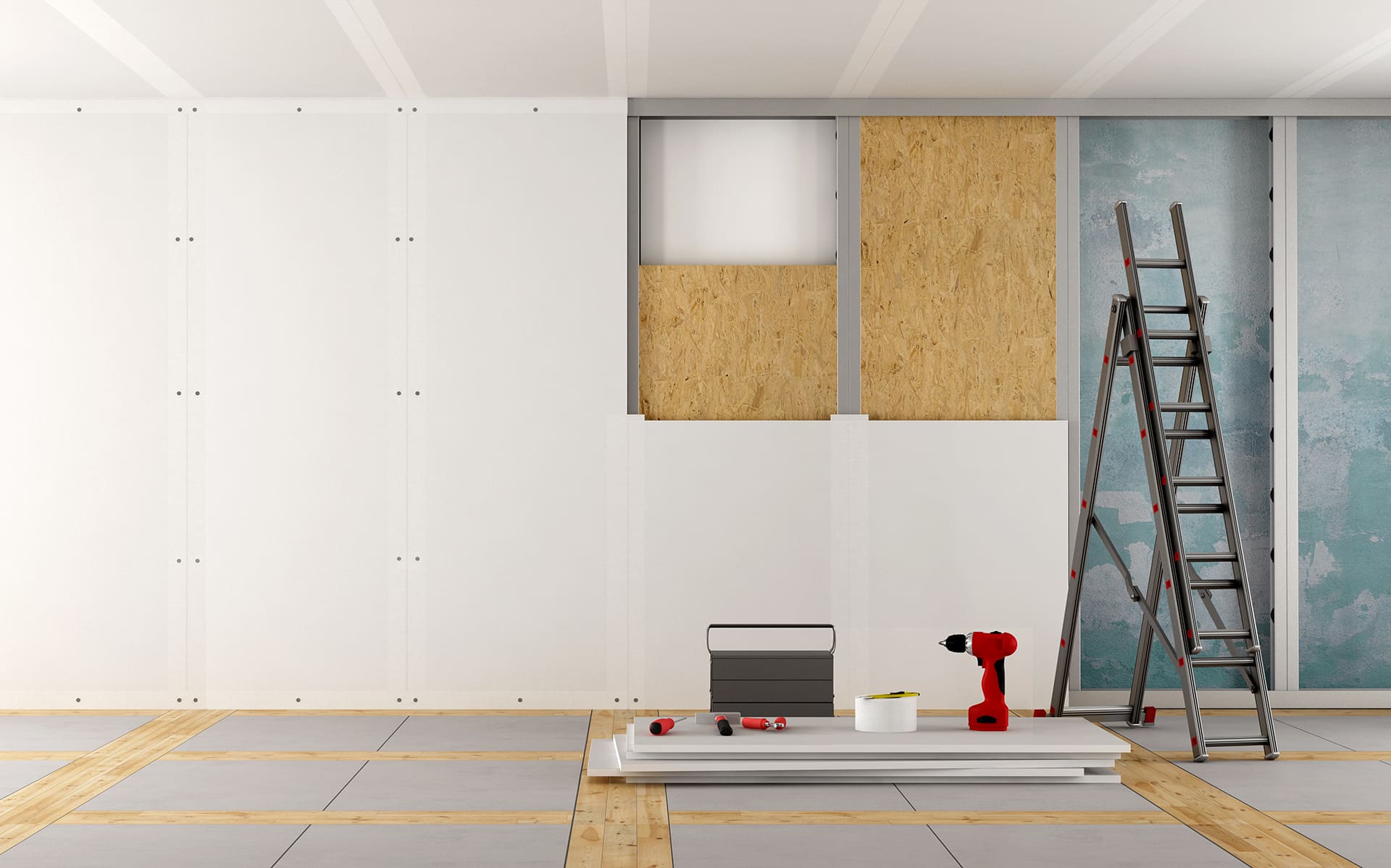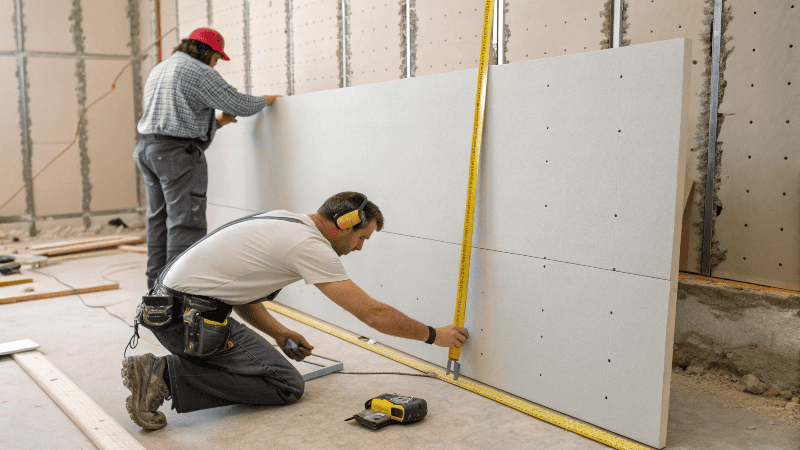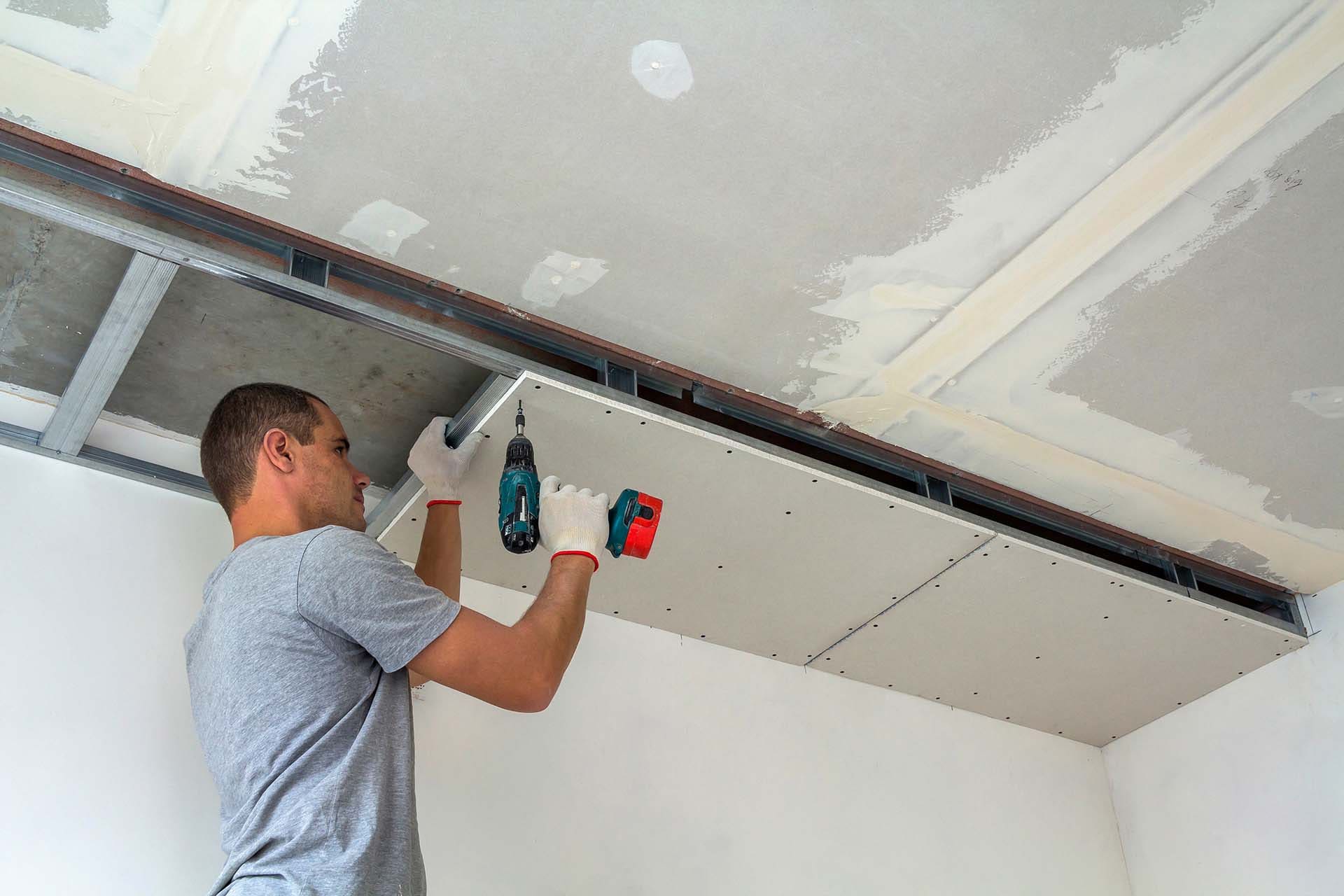What is Gypsum Board?
A comprehensive guide to understanding gypsum board, its composition, applications, and benefits in modern construction

Gypsum board, commonly known as drywall or sheetrock, is one of the most widely used building materials in modern construction. This versatile material has revolutionized interior wall and ceiling construction with its ease of installation, cost-effectiveness, and excellent performance characteristics.
Definition and Composition
Gypsum board is a panel made of calcium sulfate dihydrate (gypsum) with or without additives, typically encased in a paper covering. The core is primarily composed of gypsum plaster, while the facing and backing are usually made of paper or fiberglass mat.
The manufacturing process involves mixing gypsum with water and additives to form a slurry, which is then sandwiched between two sheets of paper and allowed to set and dry.
Key Components:
- Gypsum plaster core (90-95%)
- Paper facing and backing
- Additives for performance enhancement
- Water (for hydration)
Types of Gypsum Board
Regular Gypsum Board
Standard drywall for general interior applications. Most commonly used type for walls and ceilings.
Fire-Resistant
Enhanced with glass fibers and other additives for improved fire resistance. Required in certain building codes.
Moisture-Resistant
Treated to resist moisture and humidity. Ideal for bathrooms, kitchens, and basement applications.
Impact-Resistant
Reinforced for high-traffic areas. Provides superior durability against dents and damage.
Sound-Dampening
Designed to reduce sound transmission between rooms. Perfect for media rooms and offices.
Flexible Gypsum
Can be bent for curved walls and architectural features. Allows for creative design applications.
Common Applications

Interior Walls
The primary use of gypsum board is for interior wall construction, providing smooth, paintable surfaces that can be easily finished.

Ceilings
Widely used for suspended and direct-attach ceiling systems, offering fire resistance and acoustic properties.
Other Applications Include:
- Partition walls
- Fire-rated assemblies
- Shaft walls
- Area separation walls
- Sound control systems
- Decorative features
- Repair and renovation
- Commercial interiors
Advantages of Gypsum Board
Cost-Effective
Affordable material and installation costs compared to traditional plastering methods.
Quick Installation
Faster construction times with easy cutting, fitting, and finishing processes.
Fire Resistance
Natural fire-resistant properties due to water content in gypsum crystals.
Versatile Finishing
Accepts paint, wallpaper, and various decorative finishes with excellent results.
Installation Process
Measurement and Planning
Measure the area and plan the layout to minimize waste and ensure proper fit around openings and fixtures.
Cutting and Fitting
Cut gypsum board to size using a utility knife and straight edge. Score and snap for clean, straight cuts.
Attachment
Secure boards to framing using screws or nails, ensuring proper spacing and avoiding overdriving fasteners.
Finishing
Apply joint compound to seams and fastener heads, sand smooth, and prepare surface for final decoration.
Conclusion
Gypsum board remains an essential building material in modern construction due to its versatility, cost-effectiveness, and performance characteristics. Whether you're building new construction or renovating existing spaces, understanding the properties and applications of gypsum board will help you make informed decisions for your project. Its ease of installation, fire resistance, and ability to accept various finishes make it the preferred choice for interior wall and ceiling systems worldwide.
